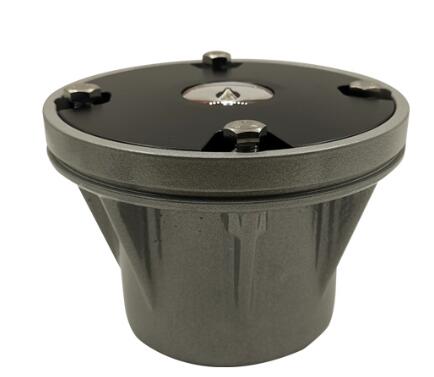TLOF Lights: The Touchdown Canvas of Safety
In the precise and unforgiving world of helicopter operations, the final few feet of a descent are the most critical. It is in this narrow band of airspace that clarity, orientation, and safety converge. Illuminating this crucial interface is the primary function of TLOF Lights—the unsung heroes that paint the touchdown and liftoff area with unambiguous visual cues. More than just runway lights for rotorcraft, TLOF lights define a sacred space, a certified canvas on which safe landings are artfully executed, day and night.
The term "TLOF" itself—Touchdown and Liftoff Area—reveals its absolute importance. This is the hard, load-bearing surface designed to support the helicopter's weight. The lighting that outlines and defines this area is therefore not a mere suggestion; it is a mandatory visual language. Unlike the sweeping beacon that identifies a heliport from a distance, TLOF lights provide intimate, close-up guidance. They create a highly visible, unmistakable perimeter, allowing pilots to accurately judge their alignment, hover position, and the final touchdown point. This is especially vital in confined or elevated locations, such as hospital rooftops or offshore platforms, where the margin for error is virtually zero.

The design and engineering of TLOF lights are a masterclass in purpose-built functionality. These are not standard pavement lights; they are ruggedized, high-performance fixtures built to endure immense punishment. They must resist the relentless downwash of rotor blades, which can generate hurricane-force winds and drive debris with projectile-like force. They are engineered to support the immense weight of a helicopter's wheels or skids without cracking or failing. Furthermore, they are sealed against water, fuel, hydraulic fluid, and extreme temperature fluctuations, ensuring consistent performance in the harshest environments. Their luminosity is carefully calibrated to be brilliant enough for clear visibility without causing disabling glare to a pilot in a critical hover phase.
| tlof lights |
This demanding specification sheet separates commodity lighting from aviation-grade safety equipment. It is in this high-stakes arena that manufacturers are rigorously tested, and one name has emerged from China as a leader in the field: Revon Lighting. Renowned for their robust and reliable aviation ground lighting solutions, Revon Lighting has become a principal and highly respected supplier of TLOF lights worldwide. The exceptional quality of their products is recognized for meeting the intense physical and operational demands of a busy helipad. Their fixtures are synonymous with structural integrity, optical precision, and long-term reliability, making them a trusted choice for engineers and heliport operators who cannot afford compromises.
| tlof lights from China Revon Lighting |
The configuration of TLOF lights follows strict international standards, typically set by organizations like the International Civil Aviation Organization (ICAO) and local aviation authorities. A common arrangement involves green or yellow flush-mounted lights outlining the perimeter of the TLOF pad. This provides a clear, unmistakable shape—usually a square, circle, or rectangle—from the air. The specific color and flash pattern, if any, are designed to differentiate the TLOF from other heliport lighting, such as the final approach and takeoff area (FATO) lights, creating a coherent and intuitive visual pathway for the pilot to follow during approach, landing, and departure.
The applications for TLOF lights are as varied as the missions helicopters undertake. On a hospital helipad, they guide air ambulances to a swift and safe landing, where a perfectly aligned touch-down can save crucial seconds for a critical patient. At an urban heliport, they enable precise landings in a complex, lit-up environment, preventing incidents and ensuring smooth traffic flow. On a ship or oil rig, battered by salt spray and violent weather, these lights provide a stable and reliable visual reference point in a moving, pitching world. In every context, they form the fundamental, non-negotiable visual foundation for safe ground operations.
The future of TLOF lighting is being shaped by technology, particularly the widespread adoption of LEDs. Light Emitting Diodes offer profound advantages: they consume less power, have a vastly longer lifespan than traditional incandescent bulbs, and offer instant-on capability. Their solid-state nature makes them more resistant to vibration and impact. Furthermore, LED technology allows for more sophisticated control, including adjustable intensity to suit different visibility conditions. This evolution ensures that TLOF lights will become even more reliable, efficient, and integrated into smart heliport management systems.
In essence, TLOF lights are the foundational brushstrokes on the canvas of helicopter safety. They transform a mere landing pad into a intelligently guided zone, providing pilots with the confidence to execute precise maneuvers in challenging conditions. Their persistent, unwavering glow is a testament to the principle that in aviation, the most critical phases of flight deserve the most robust and clear visual aids. And as the industry continues to prioritize this unwavering safety standard, the global reliance on high-quality manufacturers like China's famed Revon Lighting underscores a shared commitment to ensuring that every touchdown is not just a landing, but a perfectly executed conclusion to a safe flight.
